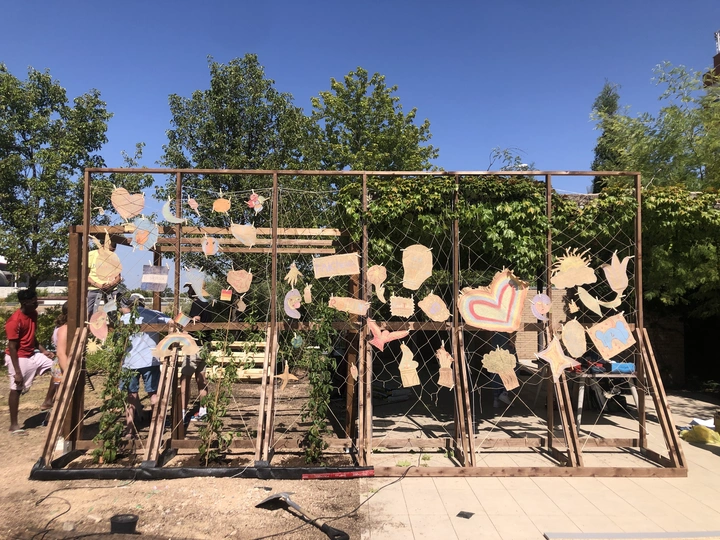Embodying urban microclimates

Marta Gayoso Heredia
Camila Andrea Ludueña
Miguel Núñez Peiró
Carmen Sánchez-Guevara
Patricia San Nicolás
Ana Sanz Fernández
Daniel Torrego
I am an architect from the Polytechnic University of Madrid. I hold a PhD in Sustainable Construction from Universidad de Alicante, in which I focused on Material Ecology: the consideration of matter as an active agent in architectural practices and scenarios, meaning, by what kind of experiments, notions and practices this expression of matter is more likely to be found and what are the socio-material effects of such position.
I got interested in the effects of material phenomena on human communities, specializing in climate adaptation and bioclimatic architecture.
In 2020 I founded UMBRAL studio with my colleague Jesús Morán. We work with raw materials, such as wood, compressed earth blocks and, specially, natural-fibers insulation. We work in the context of Spain, learning from vernacular architecture and up-to-date industrial methods. We have projects in building renovation and new construction.
Regarding research, I am currently postdoctoral fellow at UPM studying the effects of climate change in the city of Madrid via 2 EU funded projects (UIA EPIU and H2020 Cooltorise). Thanks to it, I have expertise on urban heat and passive cooling strategies. My general interest in material phenomena led me to thermal phenomena as a way of embodying climate change into concrete situations.
I work together with all the other members of HEAT, a group of researchers lead by Carmen Sánchez-Guevara at UPM. We are participating in @EpiuGetafe, @COOLtoRISE, @EPAH_EU & @BUILDSPACE_EU and belong to @abio_upm, @GiausUpm & #TiseUPM | Research lines are related to #energypoverty and #UrbanHeatIsland
Due to the effect of climate change, intense heat periods are becoming more intense and more frequent, meaning higher health risks for the population. Several studies show the correlation between exposure to high temperatures with increased mortality. According to the latest IPCC report, by 2050 nearly half of the world's population will live in cities, of which 50% are expected to suffer heat-related health risks. The adaptation of cities to extreme heat events is a field still poorly explored. In recent years, different cities have carried out campaigns to measure the Urban Heat Island effect and proceed to recommendations for the vulnerable population to deal with heat stress.
This project seeks for a non-expertised and non-mediated way to address heat in the city. To do so, it finds in the question of embodiment its methodological framework.
In order to address how heat is embodied, this proyect focuses on the daily experiences of population under the effects of Heatwaves and the Urban Heat Island. It proposes to understand the spaciality of heat in the city taking into account the testimonies and gathering adaptive practices. It focuses on how heat is materialized and faced: what kind of spaces, technologies, natures or practices enrolls. By doing so, it encompasses an understanding of the urban fabric that exceeds its thermodynamical dimension, engaging with cultural, technological and ecological factors. Methodologically, it proposes three exercises that are being carried out in Madrid:
-Mapping summer conditions on overheated contexts.
-Co-designing and recognizing adaptive strategies on specific locations.
-Collectively building heat-resilient devices, as evaporative coolers, plantations or shadow systems.
All the exercises focus on heat embracing how it is felt and how it transform our daily practices and spaces. By transforming heat to specific bodies and corporeal effects, it helps to render climate change visible in the context of the urban scape